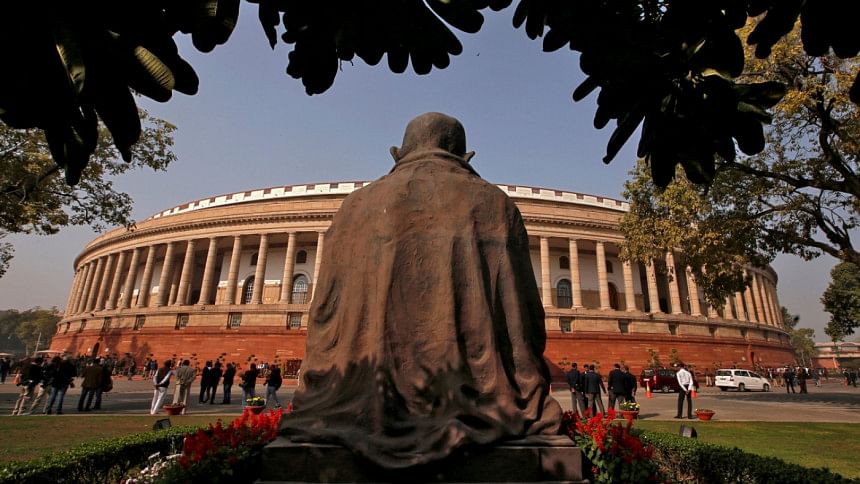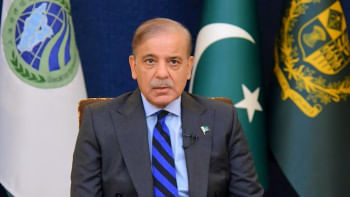Modi’s budget for 2019-20: ‘Gaon, garib and kisan’

Any government in an elected parliamentary democracy invariably seeks to strike a balance in its annual budget between the imperatives of politics and the pressing needs of the economy. It was no exception when Nirmala Sitharaman, India's first full-time female finance minister, presented her Union budget speech in parliament on July 5.
The budget presentation took place about one and a half months after Prime Minister Narendra Modi's Bharatiya Janata Party (BJP) swept back to power with a mandate quite bigger than it had secured in the previous national polls in 2014. This was possible because of a robust support from the rural poor and farmers who wanted to give him another chance to run the country despite farm distress and inadequate employment creation.
So, it was but natural that right in the beginning of her lengthy speech, lasting nearly 130 minutes, Sitharaman outlined the thrust of the 2019-2020 budget: "gaon, garib and kisan" (village, poor and farmer). The budget has left little doubt that the BJP has decided to nurture these three constituents of the electorate, shedding its traditional tag of being a party of upper castes and traders often derisively called "Baniya Janata Party."
In reaching out to the gaon, garib and kisan, Modi also seeks to erode the traditional support base of the Congress party. Nothing amplifies this better in the latest budget than the imposition of higher income tax on the super-rich, a move which is expected to fetch Rs 12,000 crore in the Modi government's kitty to fund social welfare schemes for the poor.
The party's first serious attempt to expand its social base included demonetisation in November 2016 and roll-out of Goods and Services Tax (GST) in July 2016, which hurt traders the most, albeit temporarily. But the BJP ensured this expansion was not entirely at the cost of its traditional support base as it introduced pension and easier credit for small shopkeepers and retail traders. Through demonetisation and GST, Modi did motivate many of these small-and-medium enterprises and traders to bring transparency in their businesses, by moving away from the culture of tax and duty evasion.
In reaching out to the gaon, garib and kisan, Modi also seeks to erode the traditional support base of the Congress party. Nothing amplifies this better in the latest budget than the imposition of higher income tax on the super-rich, a move which is expected to fetch Rs 12,000 crore in the Modi government's kitty to fund social welfare schemes for the poor. Given the resounding backing he received from voters recently, Modi does not seem to mind the criticism in certain quarters that wooing the poor, scaling up investment in areas having a direct bearing on their lives, and putting an additional tax burden on the ultra-rich is a throwback to the quasi-socialistic outlook of the Congress under Indira Gandhi. True, there was no fresh incentive package for the salaried middle class, which also voted overwhelmingly for the BJP, but there was no roll-back of the same announced by the Modi government in its interim budget on February 1 ahead of the parliamentary election.
Providing housing, gas cylinders, electricity and toilets for rural households during the first five-year tenure of Modi government were among the main reasons for the BJP's victory in this year's election, with a majority of women in villages voting for the party. So, Sitharaman's budget envisaging further investments in these areas as well as promising piped water for rural India by 2024 was only expected.
The budget proposed nearly two crore houses in villages by the next three years, electricity to each rural household by 2022, upgrading of 1.25 lakh km of rural roads at a cost of Rs 80,250 crore, solid waste management in every village and connecting every panchayat with internet facility. An investment of Rs 100 lakh crore in rural infrastructure in the next five years, training of 75,000 entrepreneurs in agro-based industries, and higher investment in agricultural infrastructure help amplify the gaon, garib and kisan focus of the budget. In all, a big part of the government's fund is headed to rural India and the poor to help dispel Congress leader Rahul Gandhi's frequent attack on Modi as a promoter of crony capitalism, and to fortify his image as a pro-poor politician.
The rural focus of the budget reflects the government's desperate bid to make a dent on the problem of unemployment, which is estimated at six percent there. In doing all this, Modi was surely aware that the quarterly growth of the Indian economy had recently touched a five-year low and that India's unemployment problem was the worst in more than four decades.
Friday's budget saw the Modi government proposing to tread in an area shunned by successive Indian governments in the last three decades—i.e. turning to overseas financial markets for foreign currencies to fund its schemes, particularly for infrastructure development. This may ease the pressure on India's domestic bond market and help stop the crowding out of private investment. Besides, the government can source funds abroad at a much lower rate of interest and leave room for Indian companies to tap the domestic financial market. However, some analysts feel this may also expose India to possible external shocks, a risk that had dissuaded previous governments from taking recourse to this measure.
There has been some criticism of Sitharaman's budget for leaving out any "big-bang" economic reforms like reducing subsidies for cooking gas, fertilisers, crop loans, crop insurance, farmers income subsidies and scrapping of sale and export of farm produce. The argument of critics is that the government could have undertaken bold reforms after such a big electoral mandate and that, too, in its first year of a fresh term. If there were no major reform measures in the budget, there were no new across-the-board fiscal stimuli either. Is that a pointer to the direction the Modi government will take in its second term?
Pallab Bhattacharya is a special correspondent for The Daily Star.
Follow The Daily Star Opinion on Facebook for the latest opinions, commentaries and analyses by experts and professionals.
To contribute your article or letter to The Daily Star Opinion, see our guidelines for submission.

 For all latest news, follow The Daily Star's Google News channel.
For all latest news, follow The Daily Star's Google News channel. 



Comments